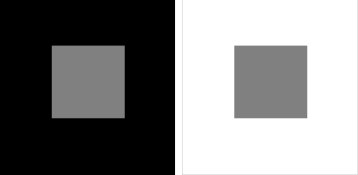Hi RobC,
I always enjoy articles that prompt discussions, and you bring up some important points.
I found something you can sink your teeth into regarding the 18% gray card. Advice to open up one stop is an approximation. You're really supposed to open up 2/3 stop (but who could work with that, so they just say "open up one stop").
The Wikipedia article for light meter has a link to a Kodak page that shows how to relate an 18% gray card to illuminance.
http://www.kodak.com/cluster/global/en/consumer/products/techInfo/am105/am105kic.shtml
Relate the table to Sunny 16. Sunny 16 is commonly considered to be 81920 lux.
The chart doesn't go to 81920 lux, it stops at 64300 lux. What would be Sunny 16 from there?
Convert 64300 to log: 4.808
Add 1/3 stop, or 0.1: 4.908
Convert from log back to arithmetic: 80909 lux
2/3 stop more than 64300 would be 101908 lux and that overshoots by a significant amount.
Looking at the chart and working up to the shutter speed recommended for a reading of an 18% gray card in Sunny 16 conditions would be 4 1/3 stop faster than 1/30
By following the dial on my exposure meter from 1/30 second up 4 1/3 stops, I find a shutter speed of 1/600 second. This is what would be recommended by an exposure meter looking at a gray card in Sunny 16 conditions for ISO 400 film.
This is 2/3 stop higher shutter speed than the Sunny 16 rule. So you should open up 2/3 stop from a gray card reading, because it is 2/3 stop lighter than the calibration point.
Now what's 2/3 stop less than 18%? Find that and you will find a calibrated reflectance equivalent.
Following a reference I like to turn to to visualize percent reflection in terms of logarithmic density:
https://www.xrite.com/product_overview.aspx?ID=763&Action=support&SupportID=3730
18% equates to 0.74 reflection density
Add 2/3 stop (0.2) to make it denser (darker) = 0.94 reflection density
Which equates to 11%
So by this exercise it can be demonstrated that a meter is calibrated to 11%, because with a card of that reflectance in Sunny 16 light conditions your meter would indicate 1/400 second at f/16 for ISO 400 film speed.
Your thought that it is 8% would require a card with density of 1.10
Which would be to say an 18% gray card reads 0.36 density difference from what it should, and you would be recommending users to open up almost 1 1/3 stop.
So I don't agree with 8% and this is one demonstration towards the discussion. 8% is nearly 2/3 stop too dark for the job.
Another fun calculation you can work off that Kodak chart is the hypothetical... What would K have to be if the meters were calibrated to 18%.
Taking the formula N squared / t = ( L times S ) / K and substituting...
32 squared / 1/30 second = ((16,000 lux times 0.18 ) times 400) / K
30,720 = 1,152,000 / K
30,720 K = 1,152,000
K = 37.5
So K would have to be 37.5 if the meter were to be calibrated to 18%











